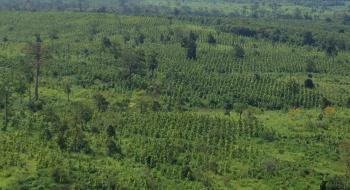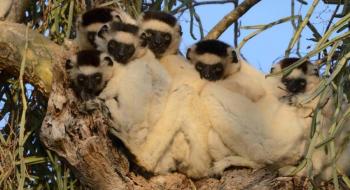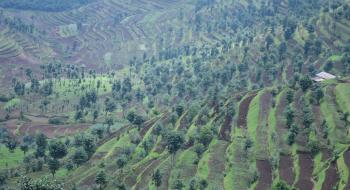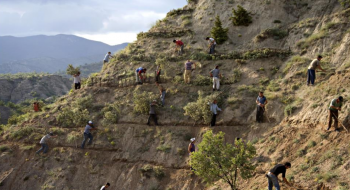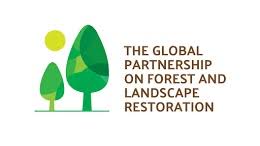Location
The Global Partnership on Forest and Landscape Restoration (GPFLR) is a proactive global network that unites governments, organizations, academic/research institutes, communities and individuals under a common goal: to restore the world’s lost and degraded forests and their surrounding landscapes.
Specifically, the GPFLR responds directly to the Bonn Challenge to restore 150 million hectares of deforested and degraded land by 2020 and 350 million hectares by 2030.
The GPFLR was initiated in 2003 by a small consortium of like-minded organizations and spearheaded by IUCN. Its purpose is to catalyze dynamic, voluntary action through sharing diverse experiences on restoration efforts which deliver tangible benefits to both local communities and nature through a landscape approach, while also fulfilling international commitments on forests.
The GPFLR does this by:
Catalyzing support
Members of the partnership work together to build support for forest and landscape restoration (FLR) at all levels. This includes building awareness and securing the interest of decision-makers and opinion-shapers from government, the private sector, civil society, the media and others. It also involves promoting increased support for FLR in international, regional and national policy frameworks.
Creating knowledge networks to accelerate restoration effort
As practitioners of FLR, we are learning all the time, through experience and from each other. The GPFLR Learning Network provides an important vehicle for that process. Our aim is to raise awareness of real world FLR experiences and make available the tools and knowledge to support practitioners in the field. By connecting our partners and collaborators around the world in an FLR community of practice we are able to spread best practices, build cooperation and exchange new ideas and solutions, saving both time and resources.
Capacity development
Courses and workshops are essential to developing individual and collective capacity with respect to the conservation and restoration of forest landscapes. Our partners organize multiple and varied courses and learning opportunities related to FLR all over the world and online.
We believe that ideas transform landscapes
Through active engagement, collaboration and the sharing of ideas and information, GPFLR promotes an integrated, cross-sectoral approach to restoration that seeks to ensure that forests and the functions and values they represent are effectively re-established, conserved and used to enable sustainable livelihoods and ecological integrity for the future.
The GPFLR does not seek to establish a parallel policy process or duplicate the efforts of others, but rather pursues and creates positive synergies between existing activities, projects, processes and institutions to encourage and reinforce the contribution of each.
Members:
Resources
Displaying 11 - 15 of 23Making restoration pay in Ghana’s degraded forest reserves
A private company is restoring degraded forest reserves in Ghana with commercial as well as native tree species, applying a business model that also brings strong community and environmental benefits.*
The company, Form Ghana, has leased about 20,000 hectares in three forest reserves in the West Africa country in order to establish and manage sustainable forest plantations. These areas were once productive semi-deciduous forest ecosystems. However, decades of overexploitation, bush fires and conversion to agricultural land left them severely degraded.
Reversing fragmentation in Madagascar’s wildlife-rich forests
Pig-rearing, essential oils, fruit trees and beekeeping: establishing additional sources of income has been key to a restoration project on the biodiversity-rich island of Madagascar.*
Forest loss and degradation have plagued Madagascar’s unique biological diversity. Direct causes include slash-and-burn agriculture for subsistence crops. As a result, the island’s evergreen forest is severely fragmented. While tree planting had occurred in the past, it centred on exotic species with limited social and ecological benefits.
Integrating trees into a restored farming landscape in Rwanda
Teaching and helping farmers to integrate trees into their lands is integral to a restoration project in a district of Rwanda that supplies most of the water used in the capital city*
Building on years of experience with sustainable land and agro-ecosystem management activities in Rulindo district, The Food and Agriculture Organization of the United Nations provided support to 276 farmers.
Afforestation and erosion control in Turkey: a national effort
Five years of afforestation and restoration in Turkey have dramatically extended tree cover, reduced the land’s vulnerability to erosion, helped combat global warming and greened thousands of public spaces.*
Turkey faces a high level of land degradation and erosion due to topography, climate change and improper agricultural practices, over-destruction of range and forest lands and the sensitivity of many areas to erosion. Frequent flooding has claimed lives and property. Run-off in some of the watersheds is irregular and water quality is low in degraded landscapes.
Niger: farmers taking restoration into their own hands
Restoration in Niger and neighbouring countries has helped to “re-green” vast areas of rural West Africa with impressive results for agriculture and livelihoods – and at very low cost.*
Farmer Managed Natural Regeneration involves restoring degraded lands at large scale by harnessing the self-interest of smallholder farmers themselves. It involves the systematic regrowth and management of trees and shrubs from felled tree stumps, sprouting root systems or seeds.


